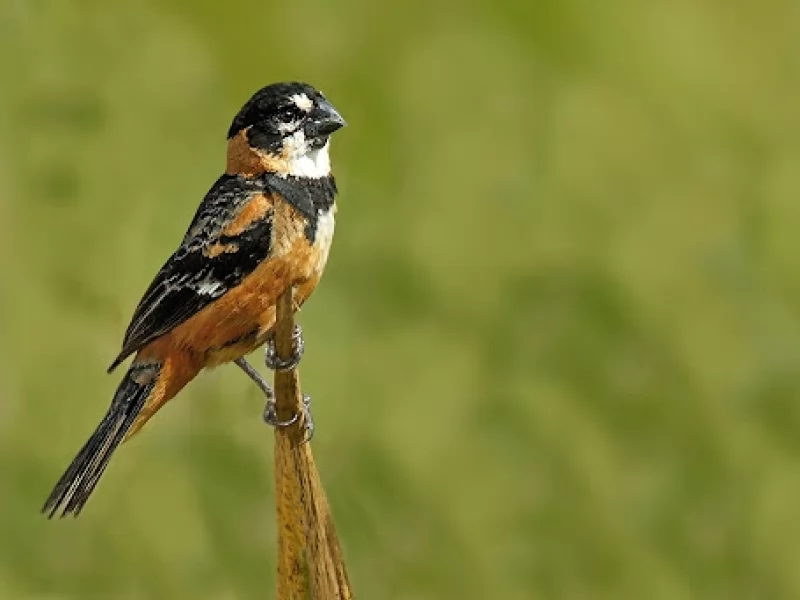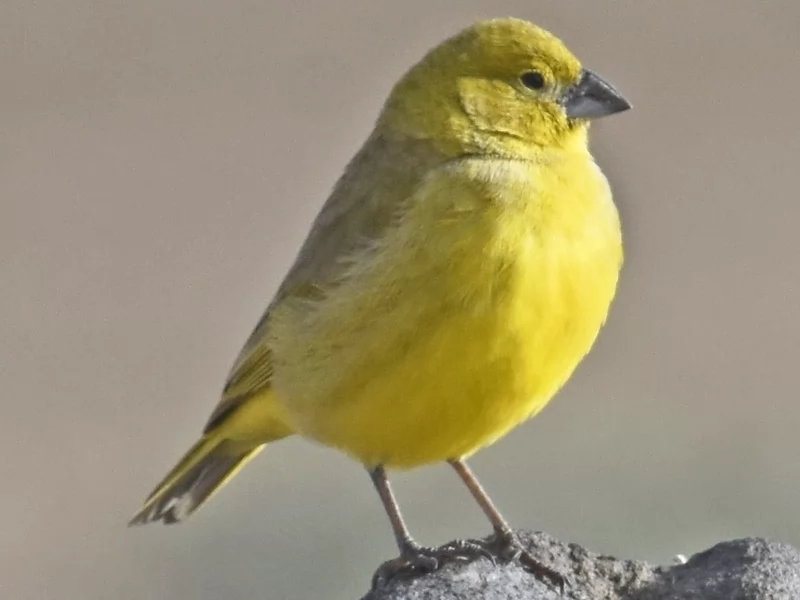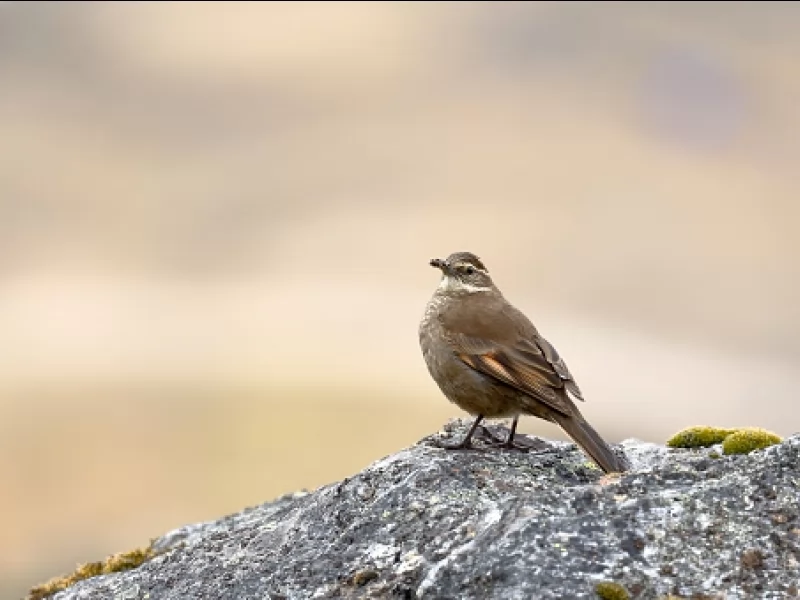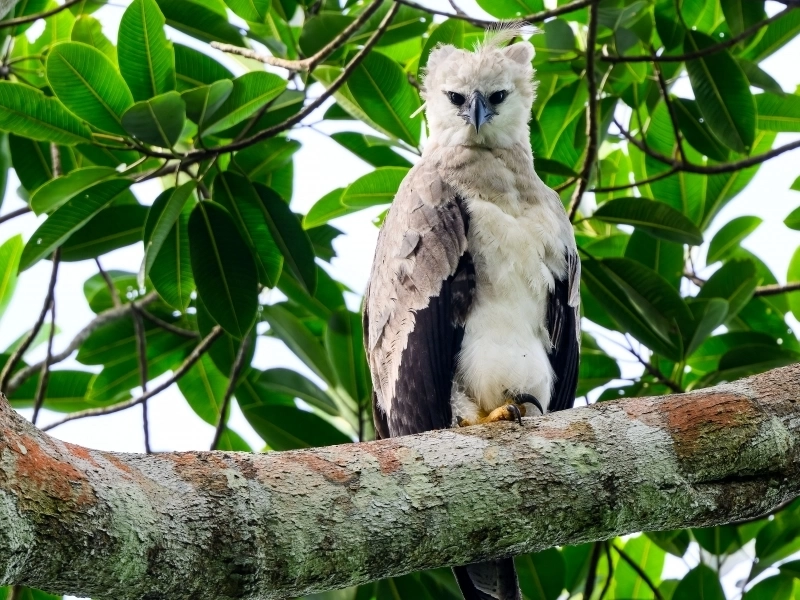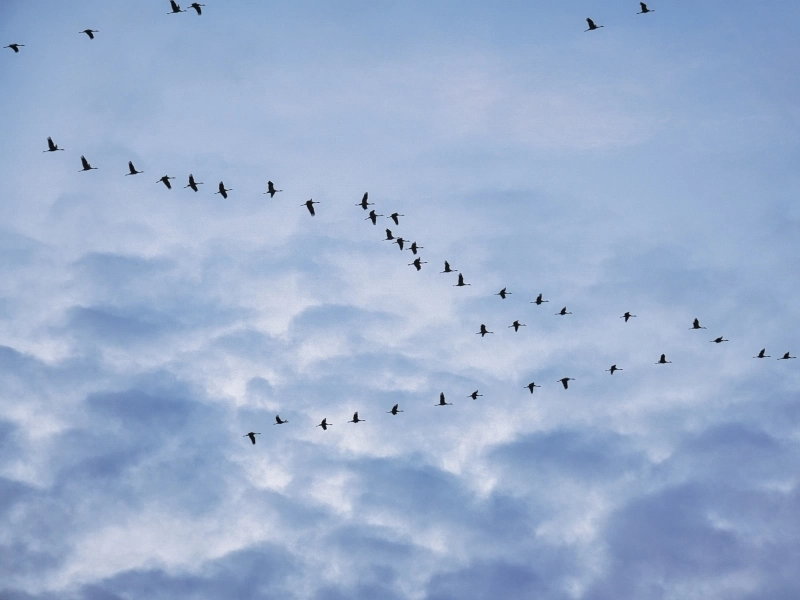News and Testimonials

Bioacoustics: the revelations of the science that deciphers the song of birds
Some specimens sing between 1,000 and 2,500 times per day. But only experts can detect and interpret each melody. Infobae spoke with an ornithologist to reveal those sound records.
For decades, Argentine field ornithologist Bernabé López-Lanús has been capturing sound records of South American birds. Here are some little-known stories of nature's wonders revealed to the trained ear.
The doctor in Biology Juan Carlos Reboreda, dean of the Faculty of Exact and Natural Sciences of the UBA, has called him “the guru of sounds”, but Bernabé López-Lanús attributes at least part of his auditory talent to a deficit: “ I don't have very good eyesight, ”he laughs. Field ornithologist, writer and director of Audiornis, a conservation biology consultancy with an emphasis on bioacoustics, López-Lanús is one of the greatest Argentine references in the song of birds, and for decades he has dedicated himself to studying and treasuring his sound records, with its own collection that reaches almost a thousand species throughout South America, a third of those existing in the region.
Why indulge in bird sounds when physical appearance can be so much more appealing? It's like asking a music lover why he doesn't prefer painting or sculpture. But López-Lanús also remembers a park ranger in Misiones who made an inventory of fauna listening to sounds for 40 minutes at dawn. “That impressed me. In the jungle of Misiones we saw 20 birds and he, from the hammock, noted 90 species ", he says in dialogue with Infobae.
Although he has no academic training, López-Lanús is co-author of works in scientific journals of the specialty, author of a complete guide of images and sounds of the birds of Argentina that is now in its fourth edition and came to discover (by singing , of course) three species ignored by science, such as the Iberá capuchin, something he describes as "the essence of the ornithologist, the summum."
His passion for birds was awakened in childhood, in a field on the middle basin of the Saladillo stream, in the Province of Buenos Aires, captivated by the concert that accompanied the sunrise over the horizon.
“I scared my brothers by telling them that itchy pigeons were wolves. I read about the fauna of Buenos Aires, there were always books about birds in my family. At the age of 12, he was convinced that he had discovered a marabú (an African scavenger stork) and it was a jabirú (the largest American stork) ”, he recalls. “It's funny, because storks… don't sing! Or, rather, they only do it when they are inside the egg, there are recordings ”, he highlights.
The first sound recordings of birds were made with a journalist recorder at age 18. “You can even record with a shoe. The quality is not so important, but the importance of the acoustic specimen ”, says López-Lanús.
Of the 10,000 species of birds, an estimated 4,000 are capable of singing. Some are tireless: a specimen of the little red-eyed vireo (Vireo olivaceus), an American bird, was recorded singing 22,197 songs over a period of 10 hours, according to the Guinness Book of Records. But it is estimated that most only sing 1,000 to 2,500 times a day.
Why do birds sing? "Essentially, to communicate," says López-Lanús. A common morning song is the vocalization of territorial proclamation, "very typical of songbirds to know how protected their territory is." It is also usually a key piece of the courtship ritual of the males. But the specialist also suspects that they sing of happiness, for example, when the wind stops. "Just as you feel good, they feel good," he says. Invited by Infobae, López-Lanús shared his six favorite stories of birdsong: because they are curious, because they are significant, because they are illustrative, because they are funny or even because of their historical value. And it accompanies the story with the respective audios: a bird is better in the ear than hundreds of silence.
1 - Twin species and the principle of the priest in the church
The type of song of the birds is also related to the environment (for example, presence of arboreal obstacles). In fact, López-Lanús explains that examples of convergent evolution have been documented where very different species in remote parts of the planet emit similar sounds because they share similar habitats. But the opposite also occurs: morphologically identical species, and with a common root, which divided into two species because they inhabit different environments. This is the case of the common swirl of the steppe and the swirl of the Andean-Patagonian lengas forest, "little brown birds smaller than a hornero and that are indistinguishable from a molecular and aspect point of view," says the ornithologist. The difference between the two lies in the song, although only when analyzed by exhaustive bioacoustic analyzes, such as spectrograms. “When he went to mass in Saladillo, the father spoke more slowly because his voice bounced off the walls of the church and generated an echo. It occurred to me that the same principle might operate, not an echo, but a reverberation from the presence of the trees. And I discovered that the swirl of the lengas forest sings more slowly, fewer notes 'ti ti ti' per second, because they adapted over the decades or centuries to the wooded environment and thus the reverberation does not 'fill' the message or I sing ”, he explains. The new proposed species now bears his surname: Cinclodes lopezlanusorum.
2 - The bird that lowers and gave the bull its name
The song of territorial proclamation of the dark hocó (Tigrisoma fasciatum) consists of an ascending succession of low notes (of low frequency), with independent elements that end in a very low and prolonged note, looing type: “ho-jó! ho-ho! Ho-ho! Muuuuuu! ”,“ Sound that can be confused with a cow moo ”. This is how López-Lanús and a Conicet researcher described their finding in "El Hornero, Neotropical Ornithology magazine", who on the morning of September 7, 2014 recorded the hitherto unknown vocalization of an adult specimen perched on the top of a tree on a stream in Formosa. "It was a gift from nature," recalls López-Lanús. The conclusion ?: the bird “bellowed” similarly to a relative, the red hocó (Tigrisoma lineatum). But the authors also raise a curious hypothesis. In Guaraní, the term “hoko” means “bull”. And taking into account that the cattle came to the Plata Basin only in 1555, “it is probable that the bulls have been called by the Guaranitic ethnic groups as the bird because they produce bellowing like this, and not that the bird has been named that way by the Bulls". In other words: when the bulls and cows arrived in the New World, native settlers associated their bellowing with the sound of the birds they already knew.
3 - Singing under the waters
If Guillermo Coppola is capable of smoking under water, as in the cover of the book "Guillote", the yellow burrito (Hapalocrex flaviventer), a bird of freshwater wetlands and tropical ponds, has a similar ability: to sing below the surface watery. Or almost. López-Lanús had heard its "beep" in Ecuador and had yet to make a good recording of the species. He had his chance 30 years later, in a bathed in Entre Ríos. The sound was clear. I was 4 inches away, in the middle of the aquatic vegetation, but I couldn't see it! The ornithologist ruled that he had been confused and that, in fact, it was a frog. Soon after, he understood everything. The yellow burrito barely shows its beak and the sound continues from the air, but with its whole body submerged.
4 - The “magical” display of a goldfinch
Of the ten species of goldfinch in Argentina, López-Lanús believes he has discovered one of unique characteristics: the Ventanero goldfinch or Sicaris holbergi, an endemic species of the Province of Buenos Aires isolated in the Sierra de la Ventana quaternary mountain range system. “Among the goldfinches it has a very high frequency vocalization. And the trill is accompanied by an impressive display on the edges of walls 10, 15 and 100 meters high. It looks for that position to be able to make its song, with a display in front of the females that is like a suspended flight with a very fast beating of wings reminiscent of butterflies. It is something magical. Great, ”says López-Lanús.
5 - The Ignored Copycat
Many birds have the ability to imitate the song of other species. But until recently, no one knew that the Collared Bowtie (Sporophila collaris), a small 11-gram bird that spans the eastern Southern Cone, exhibits that talent in extraordinary ways. "He is an ignored imitator, an ignored hero," says López-Lanús. "It has a brain the size of two peanuts, but the ability to imitate complex songs of 25 species in half a minute, from a chajá and a coot to a baker." The evolutionary reasons for this behavior are unknown, but it could be "to surprise females for reproductive purposes," the expert speculates.
6 - The owl that gave away a Uruguayan “getaway” by Guillermo Enrique Hudson
In his novel “La tierra purpúrea”, the Argentine naturalist and writer Guillermo Enrique Hudson (1841-1922), describes the following scene set in the Banda Oriental: “Suddenly a huge owl arrived flying silently, and perching on the highest branches From a nearby tree, he began to utter a series of monotonous screams that sounded like the barking of hounds heard at a great distance. After a while another owl began the same, responding from afar, and the melancholic duo remained for an hour. Every time one of the birds stopped its bu-bu-bu-bu-bu, I held my breath and listened to hear the response notes, fearing that the slightest movement would make me lose them. " For López-Lanús, who investigated this story for his book “There far and long ago II. The second part of WH Hudson's autobiography en el Plata ”, the second of the protagonists of this“ dialogue ”is indisputably the ñacurutú owl (Bubo virginianus), which Hudson could only have known in its range, which included Uruguay, "A country where he always denied having been, probably not to have problems with his spouse in Victorian England," he says. The ornithologist adds that Hudson did describe Patagonia's birdlife in detail, including the “demonic” song of an owl that was then considered ñacurutú and is now known as the Great Horned Owl (Bubo magellanicus). “He had no reason then to think that they sang differently. So he could not have rebuilt the ñacurutú song by visiting only Patagonia ”, he deduces.
Source: https://www.infobae.com/america/ciencia-america/2021/12/25/bioacustica-las-revelaciones-de-la-ciencia-que-descifra-el-canto-de-las-aves/

